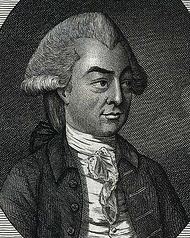Monarch George III Monarch George III Died October 7, 1793 Role British Politician | Name Wills 1st | |
 | ||
Spouse Mary Hill, Countess of Hillsborough (m. 1768), Lady Margaretta FitzGerald (m. 1747) Books A Proposal for a Union of Ireland and Britain (1751): With an Extract from J.A. Froude's The English in Ireland in the Eighteenth Century People also search for Mary Hill, Countess of Hillsborough, David Hill, Henry Bilson-Legge | ||
Preceded by The Earl of Shelburne Succeeded by The Earl of Dartmouth | ||
Wills Hill, 1st Marquess of Downshire (30 May 1718 – 7 October 1793), known as the Viscount Hillsborough from 1742 to 1751 and as the Earl of Hillsborough from 1751 to 1789, was a British politician of the Georgian era.
Contents
Best known in North America as the Earl of Hillsborough, he served as Secretary of State for the Colonies from 1768 to 1772, a critical period leading toward the American War of Independence.
Background
Born at Fairford, Gloucestershire, Wills Hill was the son of Trevor Hill, 1st Viscount Hillsborough and Mary, daughter of Anthony Rowe.
Political career
Hill, known retrospectively as Downshire, was returned to Parliament for Warwick in 1741, a seat he held until 1756. He succeeded his father as second Viscount Hillsborough in 1742 (as this was an Irish peerage he was able to continue to sit in the British House of Commons). He was the same year appointed Lord Lieutenant of County Down and Custos Rotulorum of County Down.
In 1751 he was created Earl of Hillsborough in the Peerage of Ireland. In 1754 he was made Comptroller of the Household, a post he held until 1756, and appointed a Privy Counsellor. In 1756 he was created Baron Harwich, of Harwich in the County of Essex, in the Peerage of Great Britain, which entitled him to a seat in the House of Lords.
For nearly two years, between 1763 and 1765, he was President of the Board of Trade and Plantations under George Grenville, and after a brief period of retirement he filled the same position in 1766, and then that of joint Postmaster-General, under the Earl of Chatham. From 1768 to 1772 Hillsborough was Secretary of State for the Colonies and also president of the board of trade. Both in and out of office he opposed all concessions to the American colonists, but he favoured the project for a union between England and Ireland. On his retirement in 1772 he was created Earl of Hillsborough in the Peerage of Great Britain.
In 1779 he served as Secretary of State for the Southern Department, remaining until 1782. He was the last person to serve in this position, because the Secretaries of State were reorganized.
In 1789, he was made Marquess of Downshire in the Irish peerage.
Family and legacy
Lord Downshire married firstly Lady Margaretta, daughter of Robert FitzGerald, 19th Earl of Kildare, in 1747. After her death in 1766 he married secondly Mary Bilson-Legge, 1st Baroness Stawell, daughter of Edward Stawell, 4th Baron Stawell and widow of Henry Bilson-Legge, in 1768. She died in 1780. Lord Downshire died on 7 October 1793, aged 75, and was succeeded by his son from his first marriage, Arthur. His second daughter and last child by his first marriage was Lady Charlotte Hill, wife of John Chetwynd-Talbot, 1st Earl Talbot.
In the United States, Hillsborough County, New Hampshire, the town of Hillsborough, New Hampshire, within the county, the town of Hillsborough, North Carolina, and Hillsborough County, Florida, were named after the Marquess.
In Canada, Hillsborough Bay, on Prince Edward Island, and the village of Hillsborough, New Brunswick, were named in Downshire's honour.
